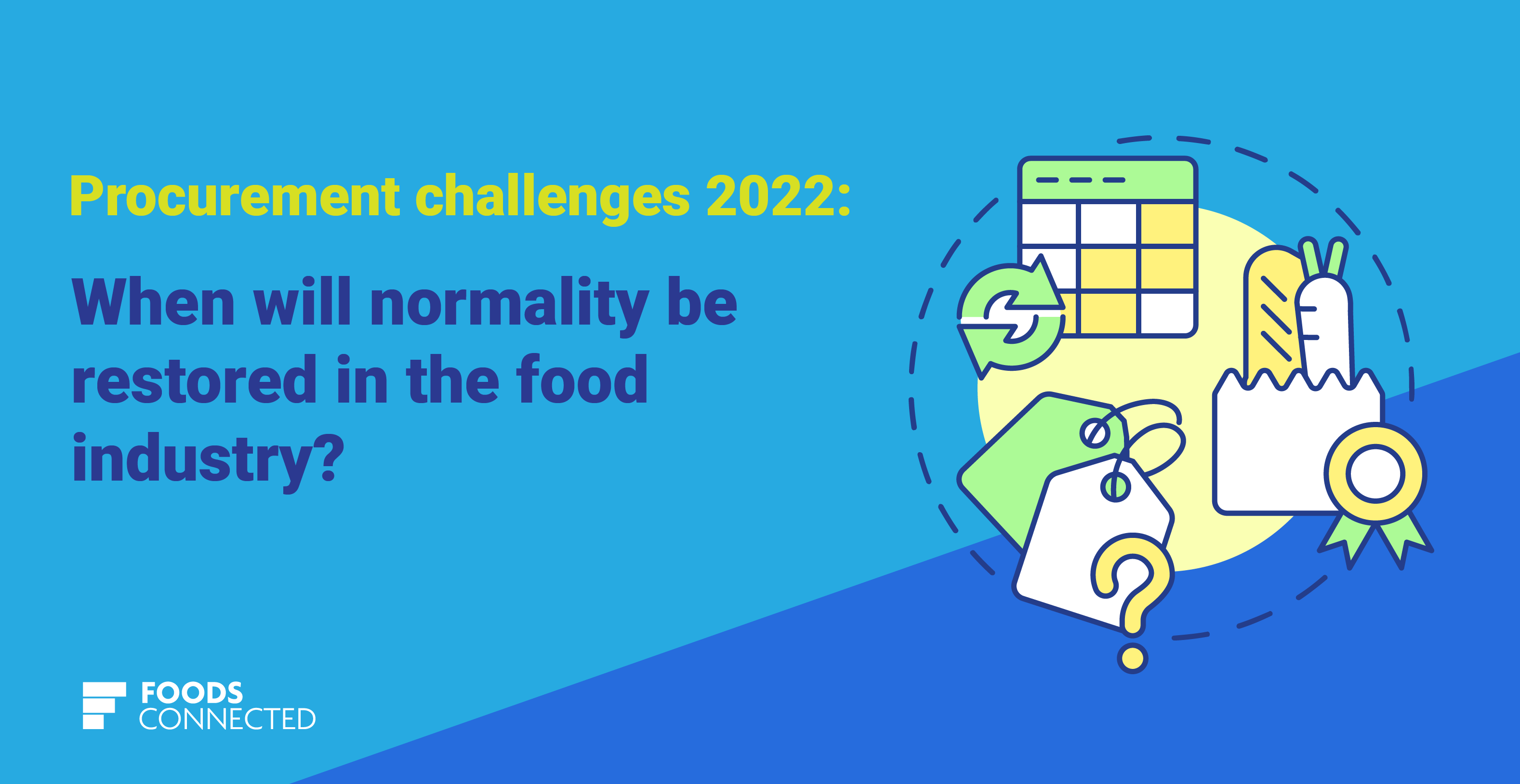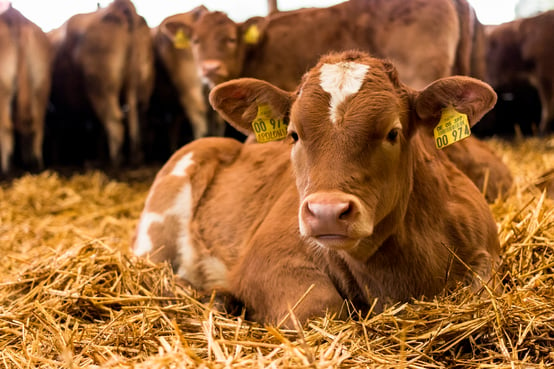
The food industry is a vital part of the global economy. In fact, it accounts for 8% of GDP worldwide. From production right through to retail, the industry has been facing several challenges in terms of procurement and supply chain management over the years. These challenges have impacted the ability of procurement teams to reliably source products and ingredients from suppliers and deliver expected value to their customers.
Supply chain continuity remains at risk
On a global scale, the continuity of supply chains has taken a massive ? recently with impact of world events like the Covid-19 Pandemic, the Russia-Ukraine war, extreme weather conditions, labour shortages and record inflation – to name a few – Creating logistical bottlenecks across not just the food industry, but across the procurement function as a whole. The main difficulty here is that, for the most part these disruptions cannot be predicted, making them difficult to respond to rapidly
As a result, there is now a clear focus on building uninterrupted food supply chains – Whether this be through Buffer stocks, Network optimisation, Mapping value chains, aggregated sourcing or developing an alternative sourcing index – Which for many businesses will involve a major shift in the strategy and implementation of their supply chain architecture as well as a huge financial implication in terms of new processes and supplier due diligence.
The threat of disease in the livestock market creates more uncertainty
An outbreak of foot-and-mouth disease in the UK led to an 11-year ban on British exports of live animals and products from 2001 to 2012. So, it’s not without merit that Australian farmers watch with trepidation as the outbreak of foot-and-mouth and Lumpy Skin Disease in Indonesia threaten the countries biosecurity, with potential to cost the cattle industry up to $100Bn. With the threat itself not limited to spreading between cattle, experts have sparked concern that a greater risk could come from passengers returning on flights from popular holiday destinations like Bali.
This creates tremendous uncertainty for procurement teams with the risk of disease potentially impacting livestock availability. Equally procurement teams are now faced with the challenge of implementing tighter inspection protocols to prevent the spread of diseases within the country and minimising supply chain disruption.
Increased cost of goods leaves procurement teams in a Catch-22
The global increase in inflation has been well documented in the media, as have the challenges it brings for business. With global inflation averages set to increase to 6.7 percent in 2022, twice the average of 2.9 percent between 2010-2020, procurement teams around the world are struggling to navigate increased supply chain costs, these costs are further driven up by market instability resulting from supply chain disruption and shortages.
This has left procurement teams in a Catch-22 situation. To keep up with market demands and stay competitive, companies must find ways to cut procurement costs without sacrificing food safety and quality. Failure to do so will see business forced to slash profit margins or introduce customer price hikes, both presenting no-win situations that are already taking hold across the industry.
Consumers demand responsibly sourced products

Consumers are increasingly demanding transparency and traceability when it comes to the food products that they purchase. They want to know where a particular product comes from and how it has been produced, so they can make informed decisions about what to buy based on their values.
As consumers become increasingly concerned with responsible sourcing – With 60% of shoppers stating they would avoid unsustainable materials, processes or practices altogether – Food businesses must place more focus on areas such as environmental and social impact as well as their animal welfare practices if they are to remain competitive.
Most importantly, consumers are becoming much wiser and will no longer be duped by empty sustainability policies and marketing jargon. Therefore, businesses must be equipped to demonstrate impact of their responsible sourcing efforts across their supply chains to provide consumers with the level of transparency and CSR they expect.
Is this the ‘new normal’? When will normality be restored?
As Greek Philosopher Heraclitus once said ‘Change is the only constant’, and in todays volatile market this has never been more true. With the unpredictable nature of the macro environment, it’s difficult to tell if, or, when the next obstacle will come along and change the course of business.
However, for now, it seems that the challenges faced by procurement teams will linger on for quite some time, becoming the ‘new normal’. While issues like the threat of livestock disease may ultimately only exist in the short term, there are sure to be lingering effects on procurement, as experienced with the Covid-19 pandemic disruptions. One particular challenge that is certain to last in the long term is the increased cost of goods due to rising inflation, currently with no end in sight.
Certainly, in terms of consumer trends, it is unlikely that attitudes and behaviours will revert to old ways, with the demand for sustainably sourced goods predicted to grow in prominence, putting increasing pressure on procurement teams to prove their worth.
There definitely are ways for procurement teams to minimize the impact of supply chain disruption and rising costs, allowing them to restore some sense of normality sooner rather than later. In many instances the introduction of supply chain technology can help improve spend visibility and accurately map supply chains, providing increased control over procurement decisions and where savings can be made without compromising the profile of their products.
Natalie Thorpe
A graduate of Letterkenny Institute of Technology, Natalie studied Visual Communication and Graphic Design. When she's not creating up new designs for company materials and branding, writing, compiling marketing plans or implementing new UX strategies, you'll find her roaming a deserted beach in search of her disappearing dog, or soaking up different cultures on her globetrotting adventures!
Stay up to date
Stay up to date
Browse Posts
- December 2025
- November 2025
- October 2025
- September 2025
- August 2025
- July 2025
- June 2025
- May 2025
- April 2025
- March 2025
- February 2025
- January 2025
- December 2024
- November 2024
- October 2024
- September 2024
- August 2024
- July 2024
- June 2024
- May 2024
- April 2024
- March 2024
- February 2024
- January 2024
- December 2023
- November 2023
- October 2023
- September 2023
- August 2023
- July 2023
- June 2023
- May 2023
- April 2023
- March 2023
- December 2022
- November 2022
- October 2022
- September 2022
- August 2022
- July 2022
- June 2022
- May 2022
- April 2022
- March 2022
- February 2022
- January 2022
- December 2021
- November 2021
- October 2021
- August 2021

/Blog%20Headers/shutterstock_1927957907%20(1).jpg)
/Blog%20Headers/shutterstock_1845178195%20(2).jpg)
/Blog%20Headers/shutterstock_2133827717%20(1).jpg)
/Blog%20Headers/shutterstock_2473376713.jpg)
/Blog%20Headers/shutterstock_2247276303.jpg)
.png)
.png)




.png)
/Blog%20Headers/Allergen%20Management-3%20key%20ways.jpg)
/Blog%20Headers/Blog%20Header_IWD%202025.png)
.png)
/Blog%20Headers/SEO_How%20meat%20processors%20can%20optimise.jpg)
/Blog%20Headers/shutterstock_1550290670.jpg)
/1.%20HubSpot%20Images/procurement%20forecasting%20tool%20ipad%2022-1.png)
/Blog%20Headers/Analysis%20Why%20beef%20prices%20are%20at%20record%20highs.jpg)
/Blog%20Headers/How%20Meat%20Processors%20Can%20Optimise%20Pricing%20and%20Supply%20with%20Data-Driven%20Procurement%20and%20Production%20Tools.jpg)